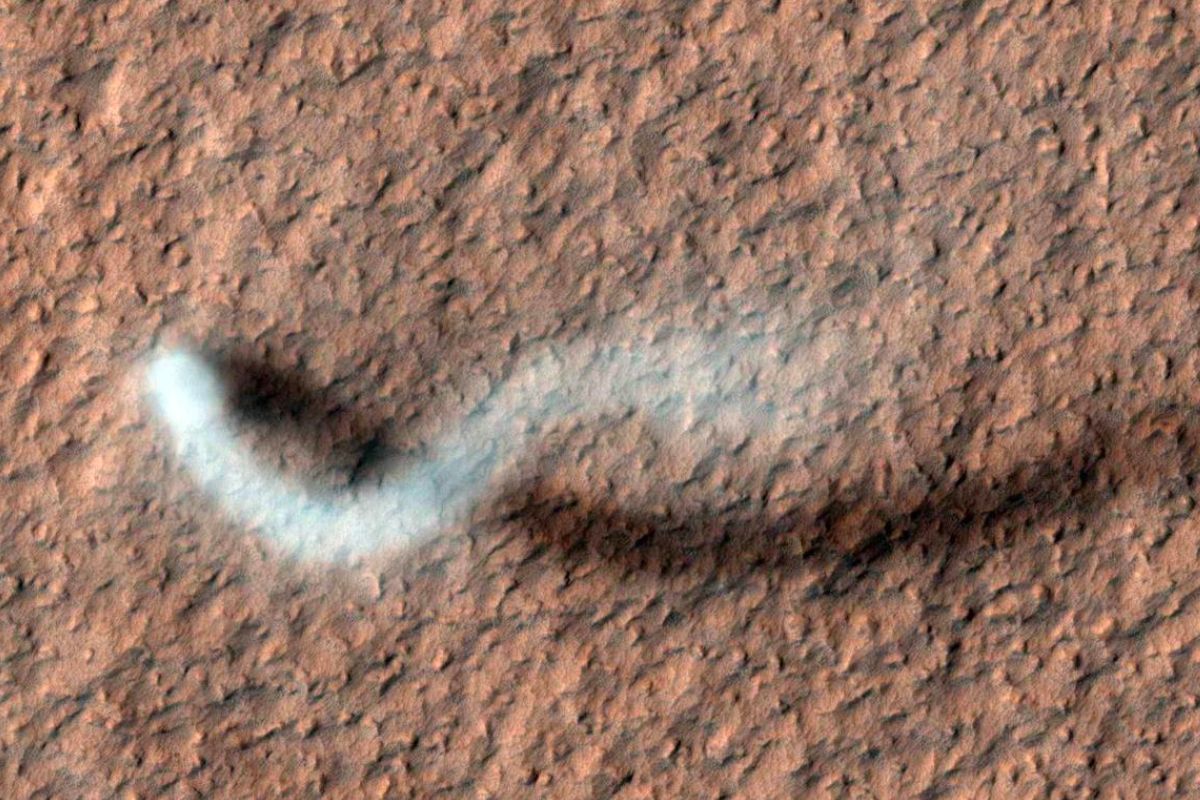
Never before has a Mars rover seen such a stir as Perseverance. The rover appears to have landed in a place where wind and dust very regularly dance together over the surface.
During its first 216 days on Mars, Mars rover Perseverance has seen hundreds of dust devils, researchers say in the magazine Science Advances† Dust devils are whirlwinds filled with dust that dance over the Martian surface with some regularity (see also the image below).

Images: NASA/JPL-Caltech/SSI.
Active substance source
The predecessors of Perseverance – such as the now defunct Mars rovers Spirit and Opportunity, but also the still operational Curiosity – also regularly saw these dust devils dance by. But the frequency with which Perseverance sees them in Jezero Crater is unmatched. “Jezero Crater may be one of the most active sources of dust on the planet,” said researcher Manuel de la Torre Juarez.
Whistles and dust devils
On average, Perseverance saw as many as four dust-filled whirlwinds pass by each day during its first 216 days on Mars. In addition, an average of four dust-filled whirlwinds formed in the immediate vicinity of the rover every day. At least 25 percent of these whirlwinds harbored so much dust that they can be classified as ‘dust devils’. In addition, the rover also recorded three times how a strong gust of wind sent enormous amounts of dust over the Martian surface in one fell swoop. And in one of these cases, a cloud of dust even formed that covered an area of up to four square kilometers (see the images below). “We think that these dust clouds do not form very regularly, but they could be responsible for much of the dust that is constantly floating in the Martian atmosphere,” said researcher Claire Newman.

Images: NASA/JPL-Caltech/SSI.
As mentioned, wind and dust dance across the Martian surface in many places, but what happens in the Jezero Crater is nevertheless special. Wind and dust often give a nice show here. Researchers don’t know exactly how that works. But it could be due in part to the fact that Jezero Crater has a fairly irregular surface, making it much easier for the wind to pick up dust from that surface. That would also immediately help explain why, for example, the InSight lander – nearly 2,500 miles away from Perseverance – is still waiting for a good gust of wind to lift the dust from its solar panels, while Perseverance has already been wiped clean a few times. “Perseverance runs on nuclear energy, but if we had solar panels instead, we probably wouldn’t have to worry about the dust layer that builds on them,” Newman. “In general, despite the average wind speed in the Jezero crater being lower and the top wind speed and the number of whirlwinds comparable to what we see in Elysium Planitia (the location of InSight, ed.), in the Jezero crater just lifted a lot more dust.”
Wind sensor
In fact, where the InSight team longs for a dust devil or two, the massive activity in Jezer Crater has actually proved damaging to Perseverance. For example, the sand carried by the whirlwinds has already considerably damaged the wind sensors with which Perseverance is equipped. But the researchers cannot lose sleep over that. “We’ve already collected a lot of great scientific data,” said De la Torre Juarez. “The wind sensors have been seriously compromised, ironically, because we got what we wanted to measure.”
Even more
And there’s more to come. “We’re still in the middle of the dust season,” Newman said. “So we’re probably going to see a lot more dust storms.” In order to be able to study these optimally, it is currently being examined whether it is possible to get the dust-affected wind sensors working again with some software changes. However, in addition to these wind sensors, Perseverance can also use its cameras to immortalize wind and dust. The rover is also equipped with light sensors that can detect whirlwinds and dust devils on the basis of sunlight scattered by the swept dust.
Research into dust dancing on Mars is important. Researchers hope in this way to gain more insight into the interaction between the wind and the dust that is abundantly present on Mars. The ultimate goal is to ultimately be able to predict the origin and development of dust storms. Huge dust storms occur on Mars with some regularity, sometimes even obscuring the entire surface of Mars. Those dust storms have proven to be a serious threat to our Mars rovers there in the past, and more recently, the Mars rover Opportunity has proved fatal. To avoid similar problems in the future, researchers hope to better understand how these dust storms form. The next step is to predict when they will make an appearance. After all, if we know that, we can take precautions to prevent problems with future Mars landers or carts, but especially also during future manned missions to Mars.
Source material:
†NASA’s Perseverance Studies the Wild Winds of Jezero Crater” – NASA
Image at the top of this article: NASA / JPL-Caltech / University of Arizona